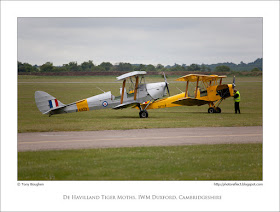click photo to enlarge
I get pleasure and interest from seeing old forms of transport still being used for their original purpose. There's a certain satisfaction that comes from knowing that something constructed decades ago still works. Perhaps that feeling comes partly from the fact that many of the vehicles that we buy, use and discard today are so obviously manufactured for a limited life and in a way that precludes them working fifty or more years down the line. Modern computerised engine management systems, LCD displays etc with their purpose-made chips linked to software that will soon be obsolete mean that today's cars will be difficult for enthusiasts to run in the future. The sophisticated metals that aircraft manufacturers began using in the 1950s and 1960s are limiting the flying time of preserved aircraft such as the Avro Vulcan; the sole airworthy example's engines' flying hours have almost expired. Heaven knows how the aviation preservation enthusiasts of the year 2100 will keep today's aircraft with their head-up displays, circuit boards and the rest of their technological gizmos in the air.
The problems that face someone today who aims to keep an aircraft from the 1930s flying are of a lesser order. The technology involved in most aircraft of this era is much more basic, and components can be relatively easily manufactured if they can't be sourced from elsewhere. I was discussing this with one of my sons the other day as we watched an assortment of old aircraft - Tiger Moths, Dragon Rapides, a Harvard, a Chipmunk, a Boeing B17 bomber and others - taking off and landing at the Imperial War Museum site at Duxford, Cambridgeshire. Today's photograph shows one of the Tiger Moths, an aircraft first manufactured in 1932. This example was built during WW2 as a training aircraft and after a long career in aerobatics, private ownership and storage is now used for pleasure flying.
I'm no specialist aircraft photographer: I have neither the lenses nor the inclination to pursue planes to the exclusion of much else. However, I'm not averse to pointing my camera at them when they come my way. I took a few shots of this particular Tiger Moth on the ground and several more when it was aloft. The main photograph is the one I liked best of the latter group. The aircraft's smallness against the dark, heavy cloud cover appealed to me more than shots where it better filled the frame.
photograph and text © Tony Boughen
Camera: Canon
Mode: Aperture Priority
Focal Length: 300mm
F No: f5.6
Shutter Speed: 1/1000 sec
ISO: 100
Exposure Compensation: -0.33 EV
Image Stabilisation: On

